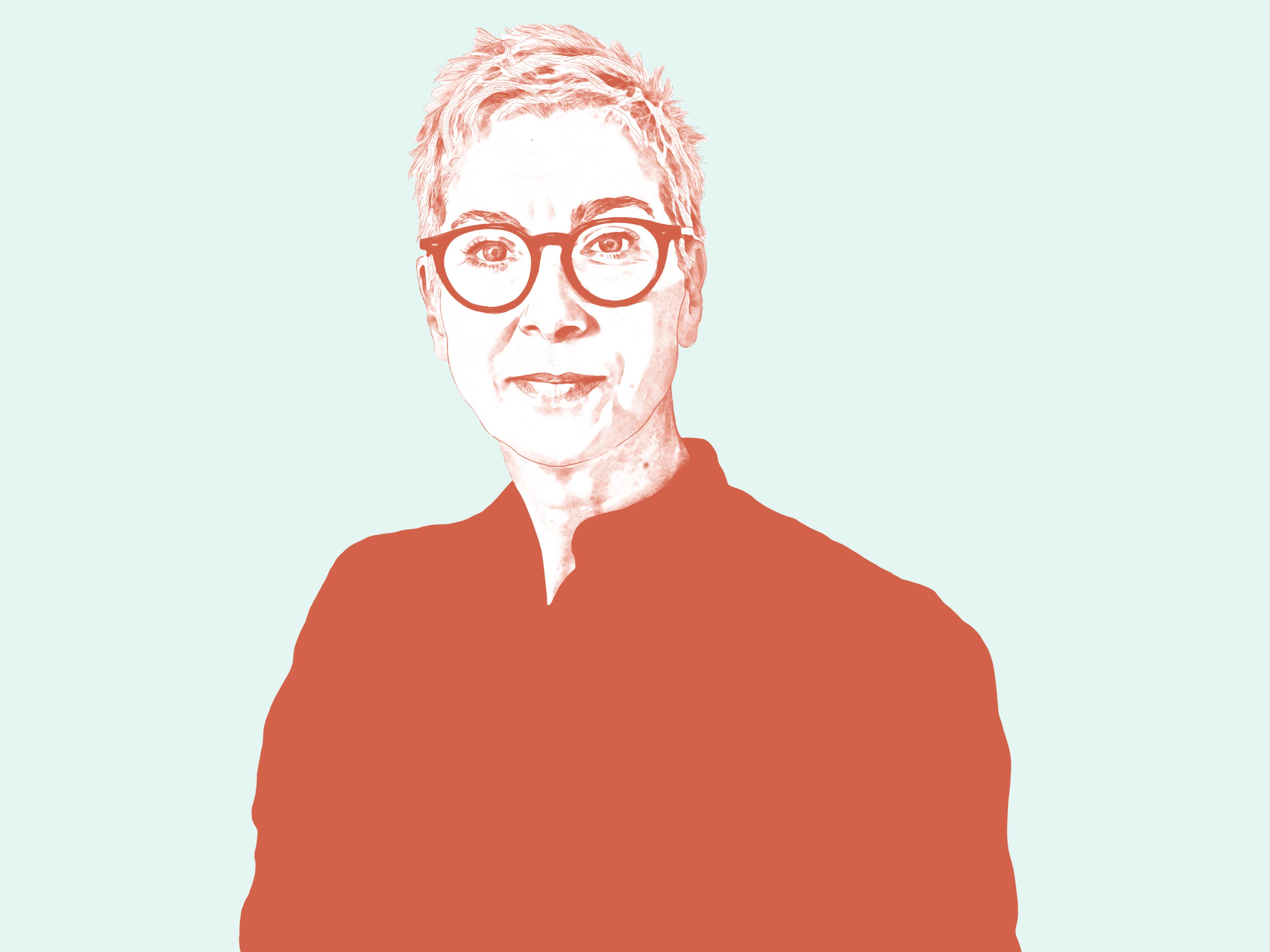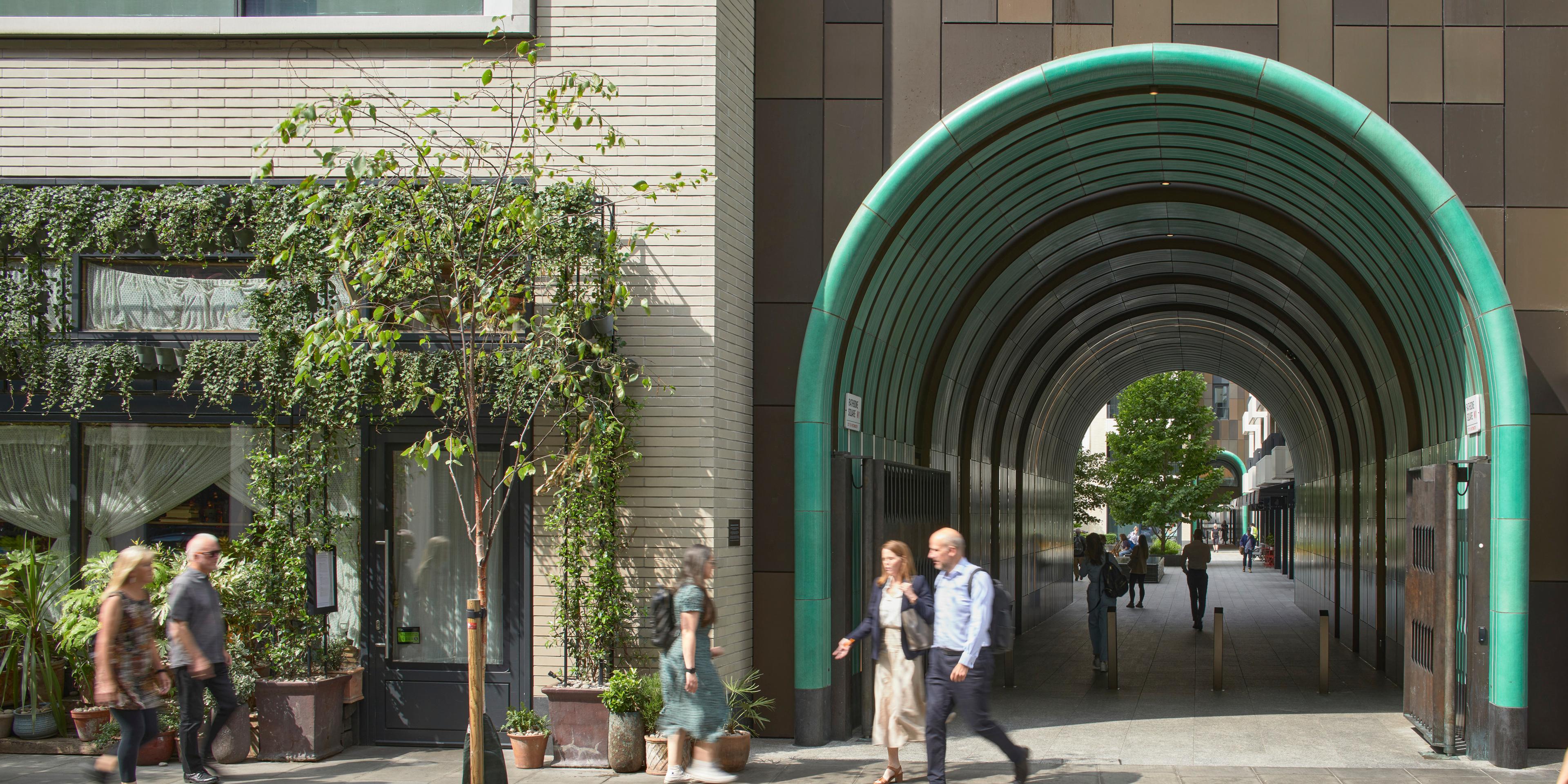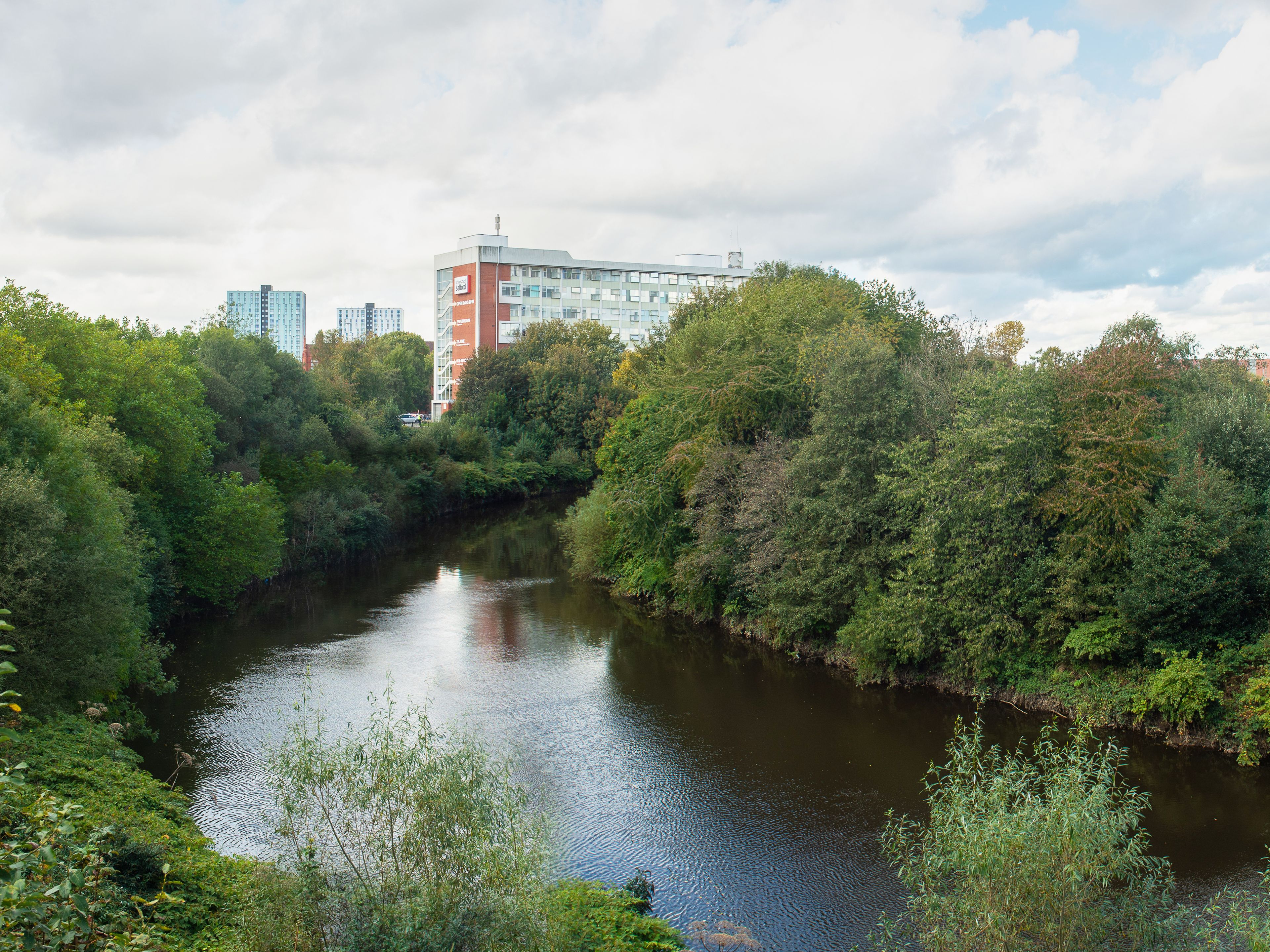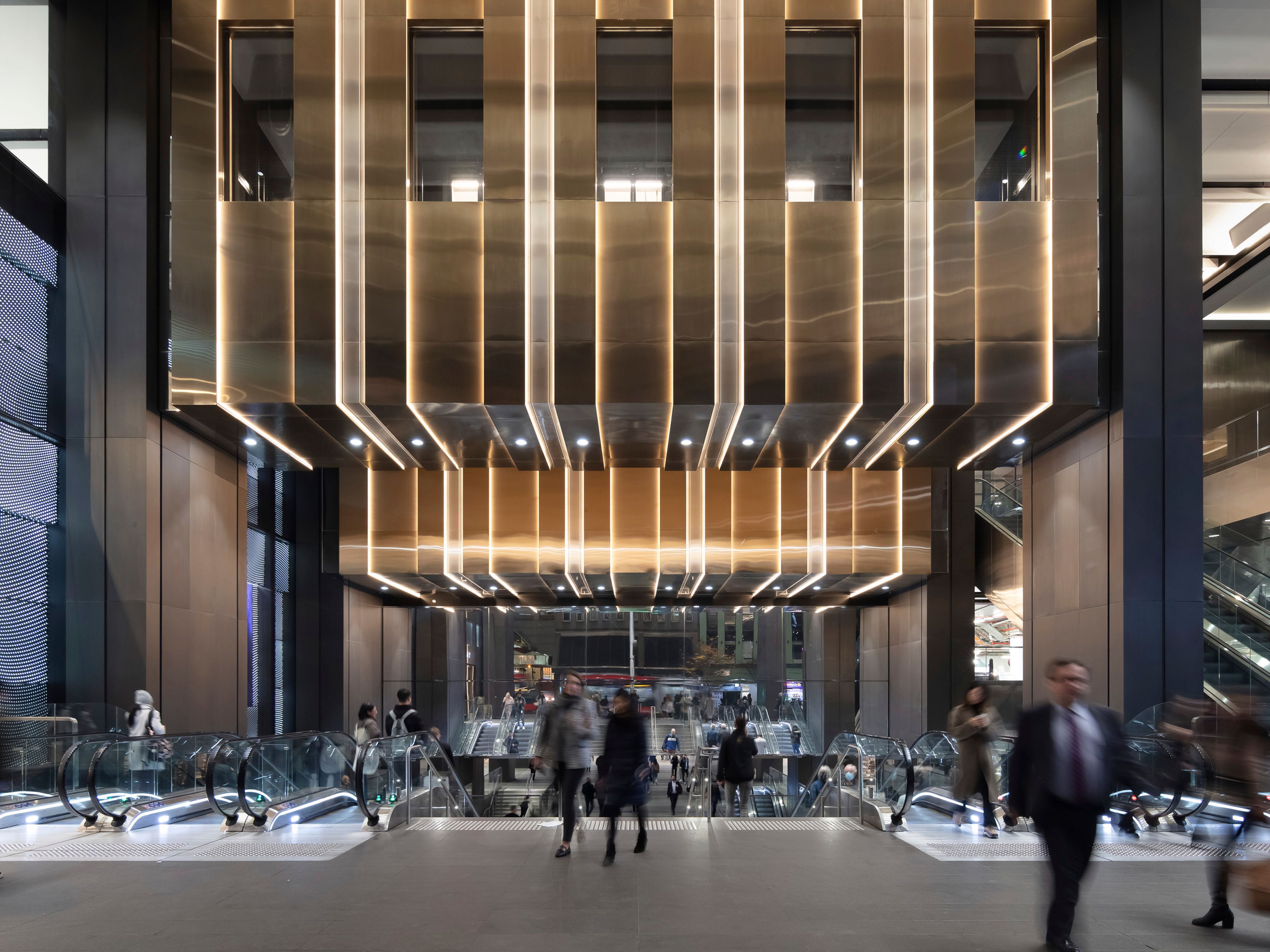Q&A with Lucy Musgrave OBE and Anna Mansfield, Publica

Lucy Musgrave OBE
Founding Director at Publica

Anna Mansfield
Director at Publica
London’s West End is buzzing with a special energy. History meets progress, innovation and culture in its eclectic buildings and historic streets. Just one block north of Oxford Street, the urban environment is granular, local and meandering, offering delight and surprise in abundance. On a former Royal Mail sorting office site, Make’s mixed-use development, Rathbone Square, has been folded into this intricate urban grain, opening up new routes and a verdant new public square. This is a place for community and connection, secluded yet integrated into the wider neighbourhood.
Make worked with landscape architect Gustafson Porter + Bowman to a brief developed by Publica to stitch the place into its context, making it feel as if it had been there for a long time. Lucy Musgrave and Anna Mansfield, founding director and director of Publica, talk about Publica’s forensic approach to placemaking and longstanding involvement in the West End.
The ‘one-block-back’ route was instrumental to opening up the Rathbone Square site and knitting together the different quarters around Oxford Street. What can you tell us about this approach?
Lucy Musgrave: Publica’s approach to civic urbanism focuses on public life and multiple perspectives to look at a neighbourhood’s complexity. That's our research methodology, and we do it through fieldwork to understand the opportunities for integration – spatially, socially and culturally – to inform the brief for the public realm. We did a detailed audit on everything from street trees to pavement widths, and analysed how spaces are being used. There's a threshold at eastern Oxford Street where you step over from Fitzrovia into Soho, and we looked at those conditions carefully and mapped why people step off Oxford Street. This built an understanding of the site and its surrounding streets and spaces.
Anna Mansfield: Because Oxford Street is an internationally significant shopping street, eating and drinking uses aren’t generally allowed on that street, so those uses are located behind, in the neighbourhoods. If you know the area, the one-block-back route is a much more exciting way than going through east Oxford Street – a more intricate way through the city. The great challenge with this project and others is how you can make a space feel intrinsically public. There was a big debate around gating or not gating, and around materials. To make the one-block-back a nice space, you have to be clear that it’s open and a part of the surrounding fabric of the city.
How has the new block helped reinvigorate the urban environment in this part of London?
LM: Through our drawings, we ask questions about routes, views, widths of passageways – whether they're covered or open, whether there's a hierarchy, and what happens inside. We didn’t just set the brief for the public realm here in writing; we used this very rich body of forensic work – the knowledge of everything that's happening around the site in both a policy and development context – to articulate the design moves. We argued for street rhythm, entrances and a suitable scale of retail, which was really important to us, because this development could easily become one big display window, and it would kill Rathbone Place. Another issue was how to safeguard the publicness of the public realm and make sure it doesn't just feel part of a bigger corporate landscape.

The arches of Rathbone Square draw you into a slightly unexpected space inside. Was that intentional?
AM: I was reflecting with Lucy on the very first drawings where the arches appeared. It was a bit of a surprise, and I think we had some reservations, but that dissipated. I think they signal something different and exciting. My kids love running down them. You can achieve a similar result by offering a glimpse of greenery – one amazing tree – and you're drawn there. There is that signalling that something's going to happen. That's very important in making a new place.
The brief for the square was to create a patchwork garden that can meet different needs in a confined space. How has this been achieved?
AM: We have a long history with the site, and built up a rich and detailed brief, working closely with the client. We thought about whether it should be a buried garden, one big tree, how it should feel. And that's how we decided that maybe a patchwork would be the best way to unify the commercial and residential buildings, the route, and the ribbon of ground level activities. It was not going to work as one single garden. The space is really well used, and it's always busy, which is really pleasing.


Reflecting on the space post-pandemic, how do you think it has held up as a neighbourhood destination?
LM: Everything's changed since the pandemic in terms of the value that's now placed on the public realm, and the focus has shifted to the space between buildings, both in statutory decision-making from local planning authorities as well as the private sector. Collectively, we are beginning to think about how we can find a link to public health and encourage all citizens to use the public realm. These things are really important, and it's great that the public and the private sector are now working more in concert.
The vision for Oxford Street is to celebrate a district of distinct neighbourhoods. How does Rathbone Square fit into this?
AM: The future of Oxford Street is incredible on its own terms, albeit challenged. Its integrity and identity are important to people. What surrounds the street is amazing. You can step off into London's most important historic neighbourhoods – Mayfair, Marylebone, Fitzrovia, Soho. They're all there but not that well linked. There are galleries around Eastcastle Street and other exciting things tucked away enough to give a sense of discovery.
Oxford Street should be the sum of all of these things. When we talk about making it a district, it's about everyone benefitting from what happens on Oxford Street. You can't make it a canyon of retail and expect it to survive and work well for the neighbourhoods around it. Places like Rathbone Square become really important in that mix, supporting, feeding and also benefitting from Oxford Street.
Authors
Lucy Musgrave OBE has played a key advisory role in policy recommendations, strategic planning and design quality advocacy over a 30-year career. She is currently a Mayoral Design Advocate for the London Mayor, a member of the NLA Sounding Board, and a member of the Cross-Cutting Committee on Sustainability and Design for Homes England.
Anna Mansfield has 15-plus years of experience in urban design and architectural practice, both in the UK and internationally, and is responsible for overseeing the strategic direction of Publica's work and research. One of her recent research projects was a major study of the evening and night-time economy in Central London.





